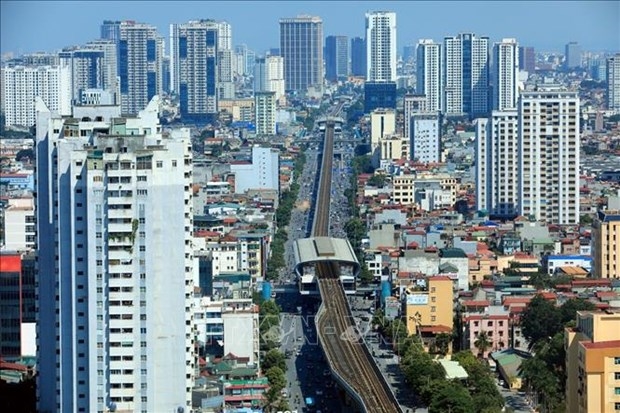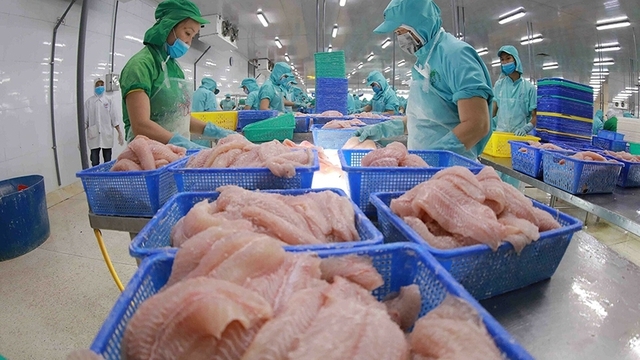 |
| Power-generating windmill turbines are pictured at a wind park in Bac Lieu province. (Photo: Reuter) |
According to the World Bank Group, Vietnam is seen as a potential major player in the sector because of its strong winds in shallow waters near coastal, densely populated areas.
Three industry sources, who declined to be named because the matter was confidential, named Danish turbine maker Vestas as one of the potential investors. The companies were looking for sites near ports but talks with local authorities and industrial parks were still preliminary as investors were waiting for the country to approve clear rules on offshore wind farms.
"We expect important investments to be decided this year by major global players in the offshore wind sector for the manufacturing of wind turbine components and Vietnam stands a good chance to welcome these," said Bruno Jaspaert, director of DeepC, an industrial zone in northern Vietnam.
Speaking on the sidelines of a wind conference in Hanoi on February 23, Erik Kjaer of the Danish Energy Agency said Vietnam has a strong steel output, therefore it would make sense to invest in the country as steel is key to making turbines.
Hanoi to spend 437 trillion VND on housing development until 2025
Hanoi will spend 437 trillion VND (18.3 billion USD) on housing development in the 2021-2025 period, reported Vietnam News Agency.
 |
| Illustrative image. (Photo: VNA) |
Under a housing development plan between 2021 and 2025 which has been approved by the municipal People’s Committee, the city targets the average housing floor area per person to be 29.5 sq.m. The size of dwelling in the urban areas is 31 sq.m per person and 28 sq.m per person in rural areas.
The capital city also plans to develop 0.55 million sq.m of floor areas for resettlement purposes and speed up the renovation of old buildings, especially those deemed dangerous for living.
Regarding commercial projects, the city will strive to complete 109 projects that are capable of finishing in 2021-2025 with 19.4 million sq.m of floor.
Hanoi will continue to remove makeshift houses and raise the permanent housing rate in the city to 90%.
Of the total investment of 437 trillion VND, 5.8 trillion VND will be used for social housing, resettlement housing projects, and apartments upgrading. The investment will be sourced from the city’s budget.
The city will also mobilise social resources for the development of commercial houses and other real estate projects.
The municipal People’s Committee requested agencies comply with the city's housing development plans to ensure a balance between housing supply and demand as well as fulfil the set targets.
Legal documents will be reviewed to remove difficulties and problems relating to housing and construction investment management of infrastructure works, it said.
The city will also issue preferential mechanisms and policies to support construction investment for technical and social infrastructure works in social housing and resettlement areas towards civilisation and modernity in order to ensure the quality of life and affordable for local residents.
Door wide open for processed, manufactured products to enter UAE
Products of the processing and manufacturing industry of Vietnam now have great chances to enjoy stronger export to the UAE, which has high demand for imports, reported Vietnam News Agency.
 |
| A tra fish processing factory. Vietnam is currently the biggest exporter of frozen tra fish fillet to the UAE. (Photo: VNA) |
Dubai is stepping up urbanisation and infrastructure development, leading to higher demand for electricity and energy in industrial and trade sectors. The development of smart grids and upgrade of transmission lines will also boost the UAE’s electrical cable market.
The UAE’s electrical cable market was valued at 192.48 billion USD in 2021 and is forecast to grow by some 4.2% on average between 2022 and 2030. Therefore, electrical cables are a highly potential product for Vietnamese enterprises to invest in and export to the Middle Eastern country, said Truong Xuan Trung, an official of Vietnam’s Trade Office in the UAE, as cited by the Cong Thuong (Industry & Trade) newspaper.
Among other processed and manufactured products, Vietnam can also boost the shipment of handbags, suitcases, and wallets, he suggested.
In 2022, footwear exports to the UAE brought home 185 million USD, rising nearly 50% from a year earlier; textiles and garments 132 million USD; timber and wood products 27 million USD, statistics show.
The Handicraft and Wood Industry Association of Ho Chi Minh City has registered to take part in a woodworking fair in the UAE in 2023. This event, which will gather many international exporters and importers, will be a good chance for Vietnamese firms to seek partners, Trung said.
 |
| Seafood is one of Vietnam's strong exports to the UAE. (Illustrative photo: VGP) |
In addition, some agricultural and fishery products of Vietnam are holding a big market share in the UAE and can be exported more to this market.
Data in 2022 show that fishery exports to the UAE increased by over 18% year on year. Vietnam is currently the biggest exporter of frozen tra fish fillet there, with an over 50% market share. Such fruits as dragon fruit, watermelon, and seedless lime from the Southeast Asian country are also dominating this market.
However, the UAE is a market with fierce competition in terms of prices and quality, the official noted, adding that the Islamic country requires food and beverage imports to have Halal certificates, and also imposes high import tariffs, up to 50%, on sugar-sweetened beverages.
Despite considerable challenges, Trung held that the UAE is attractive enough for Vietnamese firms to capitalise on since it is a highly open market, has few tariff barriers, and serves as a point of transit for goods to reach the Middle East, Africa, and Southern Europe.
Besides, the UAE is a party to the Gulf Cooperation Council (GCC), whose members share a common customs law system, so when Vietnamese goods are exported to this market, they can enter other GCC members without having to pay more taxes.
The UAE has asked Vietnam to consider the early signing of a bilateral comprehensive economic partnership agreement so as to further facilitate Vietnamese products’ entry into the Middle Eastern country, according to Trung.
ASEAN emerges as fourth largest export market for Vietnamese seafood
ASEAN has become Vietnam’s fourth largest seafood export market amid local seafood exports to the Philippines, Indonesia, and Brunei recording a sharp annual increase in January, reported the voice of Vietnam according to statistics from the Ministry of Industry and Trade (MoIT).
 |
| Photo: VOV |
Of which exports to the Philippines increased sharply by 57.85% to reach US$11.8 million, making it Vietnam’s second largest seafood export market in ASEAN.
However, Vietnamese seafood exports to ASEAN fell 14.57% in January 2023 compared to a year earlier to US$49.5 million.
The strongest decline was recorded in Malaysia at 39.31%, followed by Singapore (25.3%), Thailand (22.37%) and Cambodia (14.57%).
Although Thailand is Vietnam’s largest seafood export market in the bloc, export turnover to this market fell by 22.37% to US$22.6 million compared to January 2022.
At present, seafood exports to ASEAN account for 10.4% of Vietnam’s total seafood export turnover per month.
Fish and aquatic products are one of the main sources of protein for consumers throughout ASEAN. Indeed, the region's per capita consumption in 2017 reached 39.4 kilo per person each year, nearly doubling the world's average consumption of 20.3 kilo per person each year, according to figures released by the MoIT.
The bloc is considered a potentially-lucrative seafood market moving forward, particularly when the region’s demand for seafood products is forecast to continue to edge up by 51.5 kilo per person each year by 2030 and will reach 61.5 kilo per person per year by 2050./.